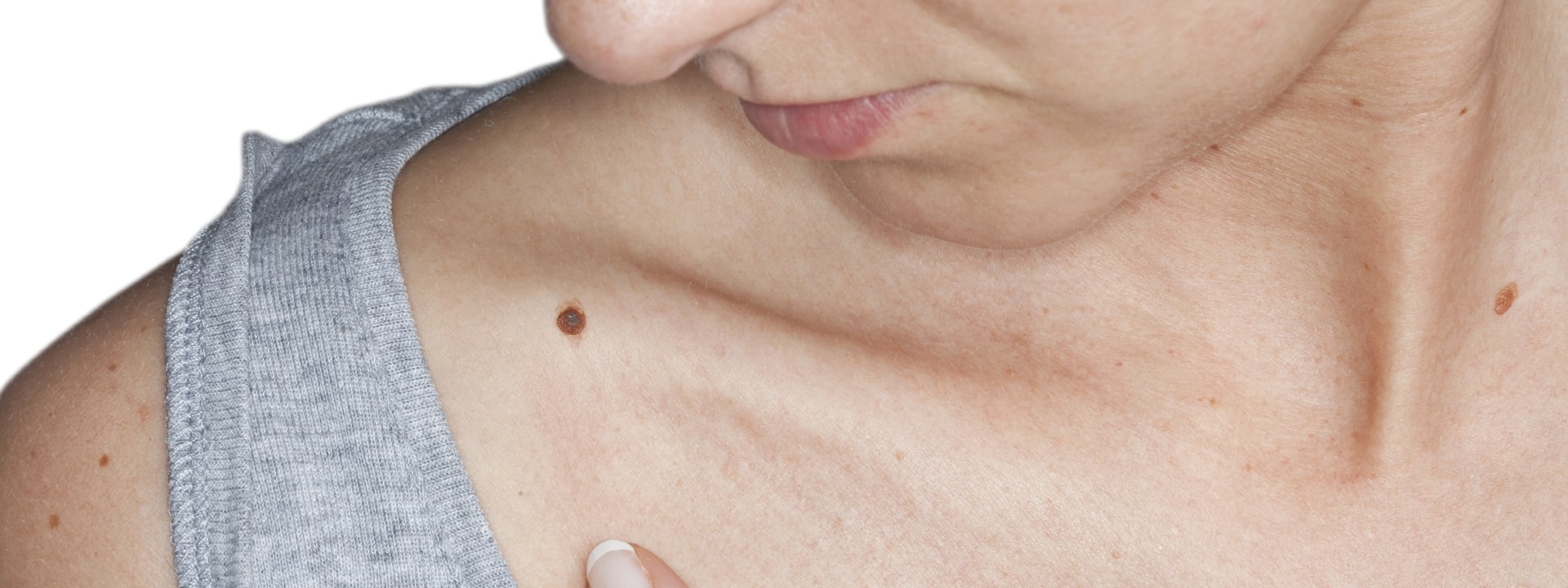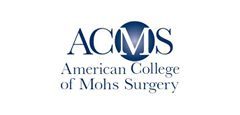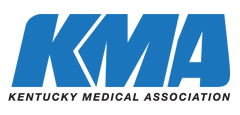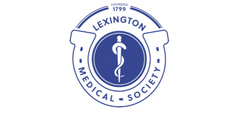
Why is it called Mohs surgery? Is Mohs an acronym?
The term “Mohs” refers to Dr. Frederic Mohs, Professor of Surgery at the University of Wisconsin, who developed this surgical technique in the 1930s. The technique has undergone many refinements and has come to be known as “Mohs micrographic surgery” or simply “Mohs surgery” in honor of Dr. Mohs.
What is Mohs surgery?
Dr. Mohs recognized that a skin cancer often resembles the “tip of the iceberg” with more tumor cells growing downward and outward into the skin like the roots of a tree. These “roots” are not visible with the naked eye, but can be seen under a microscope.
Mohs surgery is a highly specialized and precise treatment for skin cancer in which the cancer is removed in stages, one tissue layer at a time. It is an outpatient procedure, performed under local anesthesia, and is distinguished by a specific technique of tissue examination that is unique to Mohs surgery. Although other surgical specialists may check excision margins, this form of pathologic examination of the tissue is not the same as Mohs surgery.
Once a tissue layer is removed, its edges are marked with colored dyes, and a map of the specimen is created. The tissue is then processed onto microscope slides by a Mohs histotechnician. These slides are carefully examined under the microscope by the Mohs surgeon so that any microscopic roots of the cancer can be precisely identified and mapped. If cancer cells are seen, an additional tissue layer is removed only in areas where the cancer is still present, leaving normal skin intact. This saves as much normal, healthy skin as possible.
Once the cancer has been removed, the Mohs surgeon will explain options for repair of the wound, including natural healing (granulation), stitching the wound together using a side-to-side closure, or using a skin flap or graft.
What is a fellowship trained Mohs surgeon?
The ACMS fellowship is an additional course of study for 1 to 2 years that provides the opportunity for surgeons to become highly skilled in Mohs surgery. This includes the following:
- Excising skin cancers and creating precisely-oriented microscopic maps
- Interpreting slides containing tissue removed during the procedure
- Repairing the surgical defect, which involves a wide repertoire of reconstructive techniques.
I don’t see anything after my biopsy. Do I really need to be treated?
Yes. Following a biopsy, your skin cancer may no longer be visible. However, the surface lesion that was removed can represent the “tip of the iceberg.” More tumor cells may remain in the skin. These can continue to grow downward and outward, like roots of a tree. These “roots” are not visible with the naked eye. If they are not removed, the tumor will likely reappear and require more extensive surgery.
Why does my skin cancer need to have Mohs surgery?
Mohs surgery has the highest cure rate. It is especially suitable for skin cancer that:
- Is in an area where it is important to preserve healthy tissue for maximum functional and cosmetic result
- Was treated previously and has come back
- Is located near scar tissue
- Is large
- Does not have clearly defined edges
- Is growing rapidly or uncontrollably
- Is of an aggressive subtype (i.e., sclerosing or infiltrating basal cell carcinoma)
- Develops in organ transplant or lymphoma patients
How long will my Mohs surgery last?
The time needed for each Mohs surgery depends on several factors including the location and extent of your skin cancer. Please plan to be in the office for most of the day. Most of your time will be spent in our private Mohs waiting room while your tissue is undergoing processing in the lab. We have free WiFi and a TV available.
Can I eat breakfast?
Yes. Please eat breakfast prior to surgery. You are welcome to bring snacks with you as well.
Can I take my medications the morning before surgery?
Unless otherwise instructed by our office, continue all of your prescription medications. If you are taking warfarin (Coumadin), please notify our office before your scheduled surgery date as we will need to confirm your INR blood test is 3.0 or less within 1 week prior to the procedure.
What should I bring with me?
Feel free to bring reading material, a laptop or tablet, a friend or family member to keep you company, and some snacks.
What should I wear during my surgery?
Please wear comfortable clothing.
Can I drive home after surgery?
Our office will let you know during scheduling if you will require a driver. We recommend you have someone drive you home if your skin cancer is located on your head. You will likely have a bulky pressure bandage applied after surgery which may obstruct your vision or prevent you from wearing your glasses. Your companion/driver can stay with you in the office or pick you up when you are done. Some patients utilize a car service (eg Uber or taxi) for their transportation.
Will Mohs surgery leave a scar?
Yes. Any procedure that removes skin will create scar tissue.
Mohs surgery preserves as much healthy skin as possible and maximizes options for repairing the surgical defect. Once the Mohs surgeon has completely removed your skin cancer through Mohs surgery, reconstruction for optimizing the final functional and cosmetic result becomes the highest priority. After the cancer is removed we may choose to: (1) let the wound heal by itself, (2) close the wound with stitches, (3) reconstruct the wound with a skin graft or flap, or (4) reconstruct the wound on another day. This decision is based on the safest method that will provide the least noticeable scar.
Generally, a post-surgical scar improves with time and can take up to 1 year or more to fully mature. Your Mohs surgeon is available for you throughout the healing process to discuss any concerns that may arise.
How do I take care of my incision?
We will provide you with written wound care instructions before you leave our office and go through them with you in detail. Please contact our office if you have any problems or questions.
Will my cancer come back (recur)?
The goal of Mohs surgery is to remove your skin cancer while preserving your normal healthy surrounding skin. The cure rate for Mohs skin cancer surgery is up to 99% for new skin cancers and 95% for recurrent skin cancers (those which have been treated in the past and have come back.) While no method can guarantee a cure 100% of the time, Mohs surgery provides the highest possible cure rate for most tumors.
Will I develop more skin cancers?
Studies have shown that once you develop a skin cancer, there is an increased risk of developing others in the years ahead. For this reason, it is important for you to continue seeing your primary dermatologist at regularly scheduled intervals, and to schedule an appointment if you are concerned about new or changing growths on your skin.
New Patient Referral for Mohs Surgery Form (For Referring Physicians Only)








